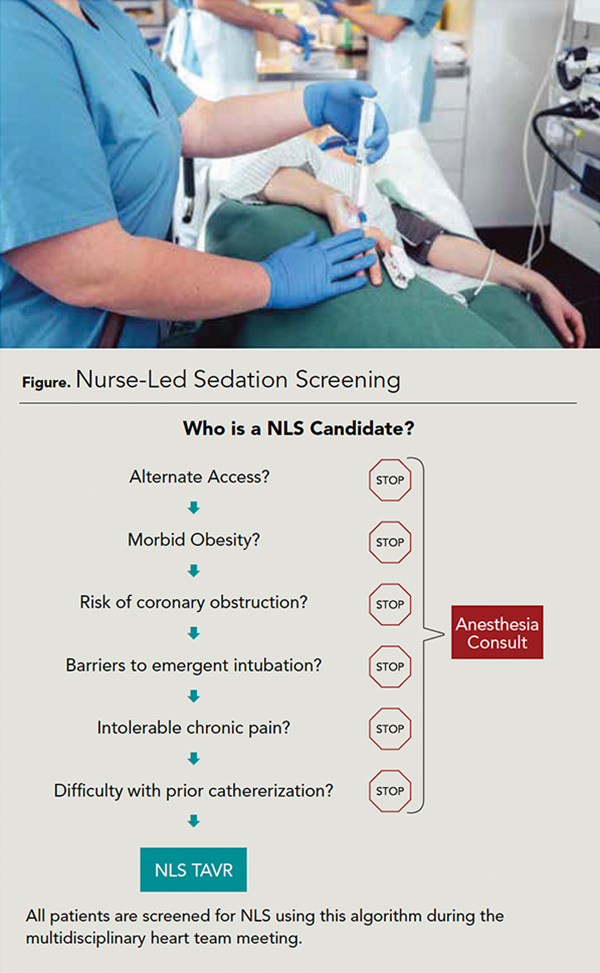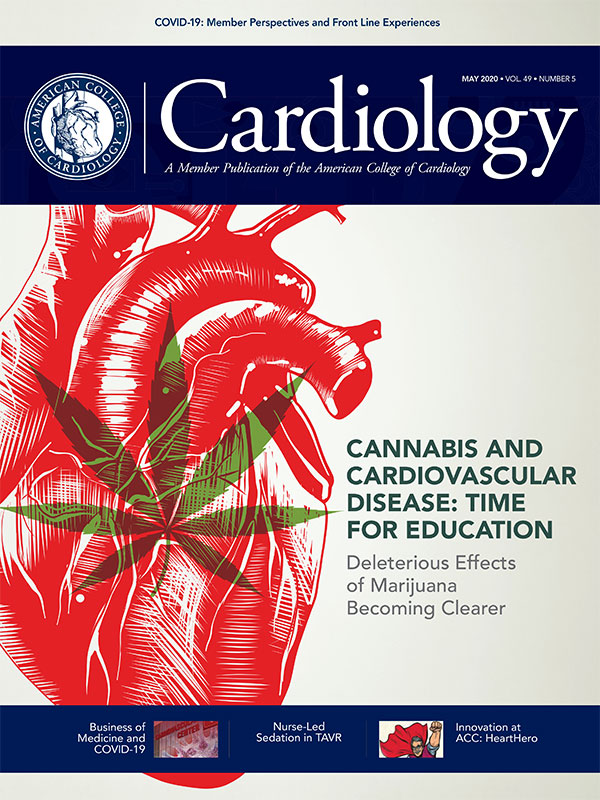Nurse-led Sedation in TAVR: Optimizing Resources, Outcomes

TAVR has revolutionized the treatment of aortic stenosis. Given its relatively recent approval for all levels of operative risk, TAVR volumes are at historic levels and are projected to increase in the coming years.
Recently, the COVID-19 pandemic has significantly delayed "elective" procedures – including TAVR at many centers. As centers begin to resume elective cases, with a backlog of postponed cases, there likely will be a need to further streamline patient care.
To date, "minimalist" TAVR protocols have been developed to increase TAVR efficiency and patient throughput with similar, if not superior, outcomes to TAVR using general anesthesia. While "minimalist" protocols typically rely on conscious sedation for TAVR, they do not specify the anesthesia provider – a distinction that is also not found in the STS/TVT registry.
The Emory Structural Heart and Valve Center started to perform TAVR in 2007 with all patients undergoing general anesthesia. Once commercially approved, the Center was an early adopter of minimalist TAVR. Despite this, there were delays in patient care given limited anesthesia availability.
To better serve patients, the multidisciplinary heart team (anesthesiology, interventional cardiology, cardiac surgery, cardiac imagers, cardiology nurses) developed a pathway for cardiac catheterization laboratory nurses who were not trained in anesthesia to provide conscious sedation with fentanyl and midazolam.
The concept is simple: by empowering every team member to work at the highest level of their license, patient care can be safe, cost efficient and streamlined.
Patient safety remains the highest priority of the nurse-led sedation protocol. Prior to TAVR, each patient is screened using the Society of Anesthesiologists (ASA) Score and Mallampati score. If a patient has an ASA score <4 and a Mallampati score <2, the patient is further screened for a prior adverse reaction to anesthesia (Figure).
Patients meeting all criteria are eligible to undergo nurse-led sedation, while patients not meeting all criteria are referred to anesthesia for further evaluation.
Importantly, one dedicated nurse provides anesthesia to the patient and is not assigned any other responsibilities during the case.
The need for increased sedation or pain medications is assessed at routine intervals and medications are administered per the predetermined protocol. Joint Commission requirements are followed at all times.
Multiple safety mechanisms are in place during each TAVR case utilizing nurse-led sedation. In the event of an emergency, an "anesthesia code" page is called.

The anesthesia team is available for intubation in less than five minutes. Additionally, the procedural area is equipped for patient resuscitation and advanced mechanical circulatory support.
Staff education is essential for the success of the program. Each year, the nurses who provide nurse-led anesthesia undergo approximately 20 hours of continuing education and provide feedback on patient care and outcomes.
To date, minimalist TAVR has been performed more than 2,000 times at Emory – with more than 1,000 patients undergoing nurse-led sedation. Clinical and echocardiographic outcomes were collected on all minimalist TAVR patients and propensity matched outcomes were reported at the 31st annual Transcatheter Cardiovascular Therapeutics Scientific Sessions in September 2019.
Results are promising. There were no differences in procedural mortality, conversion to general anesthesia, conversion to open cardiac surgery, major or minor vascular complications, new-onset arrhythmia, or need for pacemaker implantation.
There was a significant reduction in procedure time and patient time in the intensive care unit. After careful review of all adverse events, none were directly attributable to nurse-led sedation. Importantly, at one year there was no difference in readmission or death between groups.
Nurse-led sedation during minimalist TAVR appears to be feasible, safe and effective. It may allow centers to increase TAVR efficiency and decrease resource utilization. Conceivably, this strategy may be more cost effective than TAVR with a dedicated anesthesia team.
The Emory Structural Heart and Valve Center offers dedicating teaching on nurse-led sedation and site visits.
Clinical Topics: Cardiac Surgery, COVID-19 Hub, Invasive Cardiovascular Angiography and Intervention, Valvular Heart Disease, Aortic Surgery, Cardiac Surgery and VHD, Novel Agents, Interventions and Structural Heart Disease
Keywords: ACC Publications, Cardiology Magazine, Conscious Sedation, Anesthesiology, COVID-19, Transcatheter Aortic Valve Replacement, Midazolam, Fentanyl, Patient Safety, Patient Readmission, Cost-Benefit Analysis, severe acute respiratory syndrome coronavirus 2, Aortic Valve Stenosis, Pandemics, Registries, Anesthesia, General
< Back to Listings



